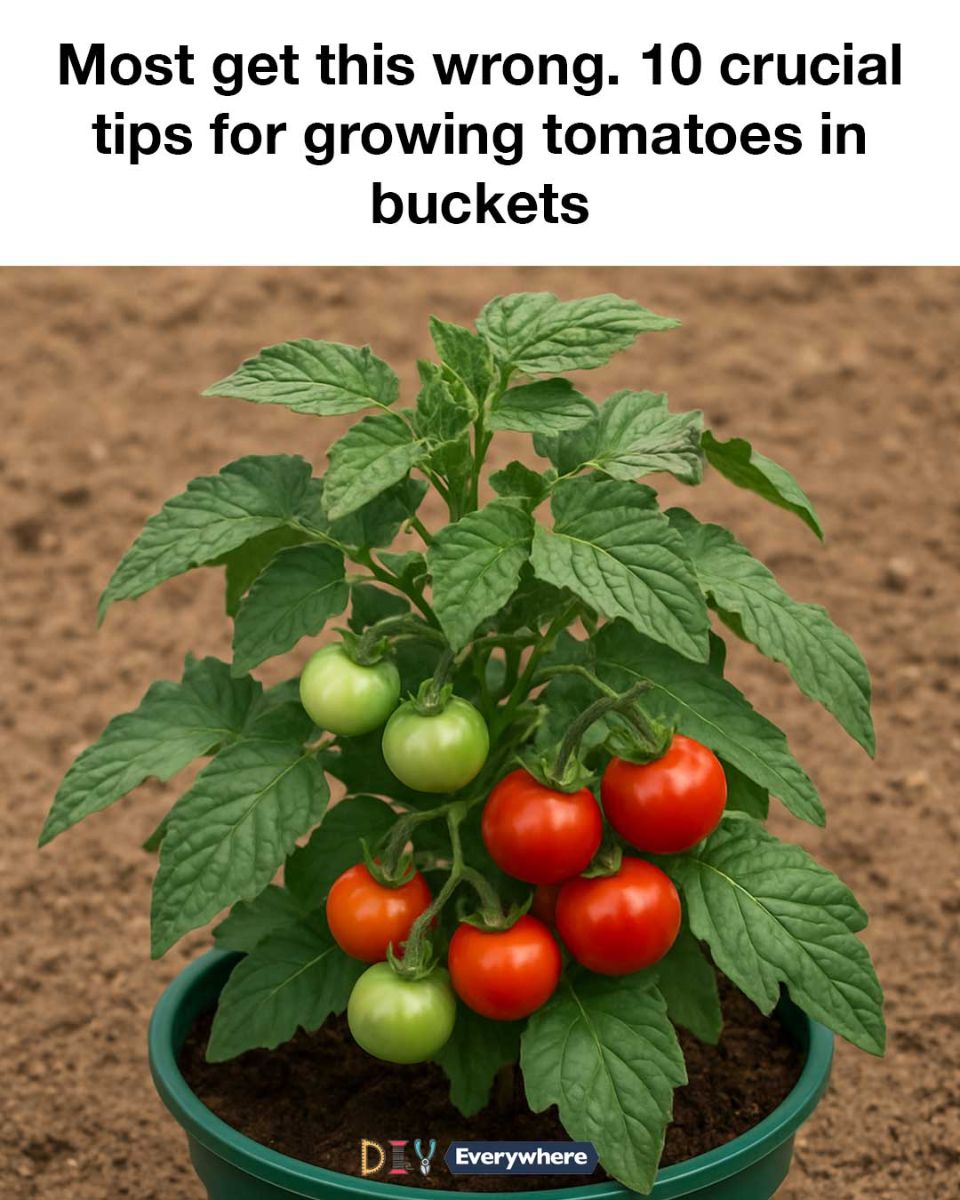
Most get this wrong. 10 crucial tips for growing tomatoes in buckets
Proper drainage is crucial for growing tomatoes in buckets. Without it, water can accumulate at the bottom of the container, leading to root rot and other issues. To ensure adequate drainage, drill several holes in the bottom of your bucket. A minimum of five to six holes, each about 1/4 inch in diameter, is recommended.
In addition to drilling holes, consider placing a layer of gravel or small stones at the bottom of the bucket before adding soil. This layer will help facilitate drainage and prevent soil from clogging the holes. Regularly check the drainage holes to ensure they are not blocked by debris or compacted soil.
4. Using High-Quality Potting Mix
The quality of the potting mix you use can significantly impact the health and productivity of your tomato plants. A high-quality potting mix should be well-draining, nutrient-rich, and free of pests and diseases. Avoid using garden soil, as it can be too dense and may contain pathogens.
Look for a potting mix that contains ingredients like peat moss, perlite, and vermiculite, which improve aeration and drainage. Many commercial potting mixes are pre-fertilized, providing an initial boost of nutrients to your plants. If you prefer to make your own mix, combine equal parts of peat moss, perlite, and compost for a balanced blend.
5. The Importance of Sunlight
Tomatoes are sun-loving plants that require a minimum of 6 to 8 hours of direct sunlight each day to thrive. When growing tomatoes in buckets, it’s essential to place them in a location that receives ample sunlight. South-facing balconies or patios are ideal spots.
If your space does not receive enough natural sunlight, consider supplementing with grow lights. LED grow lights are energy-efficient and can provide the full spectrum of light that tomatoes need for photosynthesis. Position the lights about 12 inches above the plants and adjust as they grow to ensure even light distribution.
6. Watering Techniques for Bucket Tomatoes
Consistent watering is vital for the health of your tomato plants, especially when grown in containers. Buckets tend to dry out more quickly than garden beds, so it’s important to monitor soil moisture regularly. Water your tomatoes deeply, ensuring that water reaches the root zone. A general rule of thumb is to water when the top inch of soil feels dry to the touch.
Be cautious not to overwater, as this can lead to root rot. It’s better to water thoroughly and less frequently than to provide small amounts of water daily. Consider using a drip irrigation system or self-watering containers to maintain consistent moisture levels, especially during hot weather.
7. Fertilizing for Optimal Growth
Tomatoes are heavy feeders and require regular fertilization to produce a bountiful harvest. Start by incorporating a slow-release fertilizer into the potting mix at the time of planting. This will provide a steady supply of nutrients as the plant grows.
Throughout the growing season, supplement with a balanced liquid fertilizer every two to four weeks. Look for a fertilizer with an N-P-K ratio of 10-10-10 or 5-10-10, which provides a good balance of nitrogen, phosphorus, and potassium. Be mindful not to over-fertilize, as this can lead to excessive foliage growth at the expense of fruit production.
8. Supporting Your Tomato Plants
Providing adequate support for your tomato plants is essential, especially for indeterminate varieties that can grow quite tall. Even determinate varieties can benefit from some form of support to keep the fruit off the ground and prevent branches from breaking.
Use tomato cages, stakes, or trellises to support your plants. Insert the support structure into the bucket at the time of planting to avoid damaging the roots later. As the plant grows, gently tie the main stem to the support using soft ties or garden twine, being careful not to constrict the stem.
9. Managing Pests and Diseases
Pests and diseases can quickly derail your tomato-growing efforts if not managed properly. Common pests include aphids, whiteflies, and tomato hornworms. Regularly inspect your plants for signs of infestation and take action promptly. Hand-picking larger pests and using insecticidal soap or neem oil can help control smaller insects.
To prevent diseases, ensure good air circulation around your plants by spacing them adequately and pruning excess foliage. Avoid overhead watering, as wet leaves can promote fungal diseases like blight. If you notice any diseased leaves, remove them immediately to prevent the spread of infection.
10. Pruning and Maintenance Tips
